#turkic goddesses
Explore tagged Tumblr posts
Text
the pathologic Kin is largely fictionalized with a created language that takes from multiple sources to be its own, a cosmogony & spirituality that does not correlate to the faiths (mostly Tengrist & Buddhist) practiced by the peoples it takes inspirations from, has customs, mores and roles invented for the purposes of the game, and even just a style of dress that does not resemble any of these peoples', but it is fascinating looking into specifically to me the sigils and see where they come from... watch this:
P2 Layers glyphs take from the mongolian script:

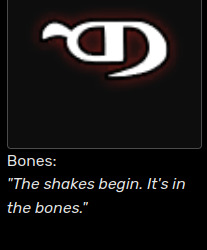

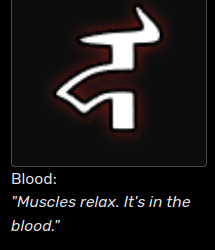

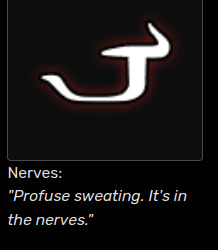

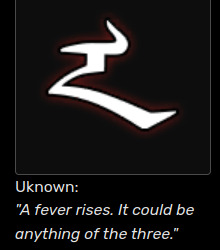
while the in-game words for Blood, Bones and Nerves are mongolian directly, it is interesting to note that their glyphs do not have a phonetic affiliation to the words (ex. the "Yas" layer of Bones having for glyph the equivalent of the letter F, the "Medrel" layer of Nerves having a glyph the equivalent of the letter È,...)
the leatherworks on the Kayura models', with their uses of angles and extending lines, remind me of the Phags Pa Script (used for Tibetan, Mongolian, Chineses, Uyghur language, and others)


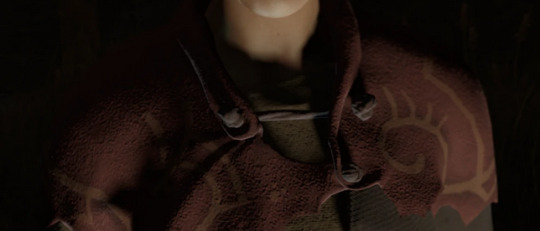
some of the sigils also look either in part or fully inspired by Phags Pa script letters...






some look closer to the mongolian or vagindra (buryat) script

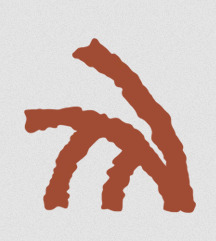
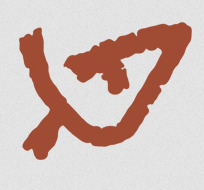


looking at the Herb Brides & their concept art, we can see bodypainting that looks like vertical buryat or mongolian script (oh hi (crossed out: Mark) Phags Pa script):
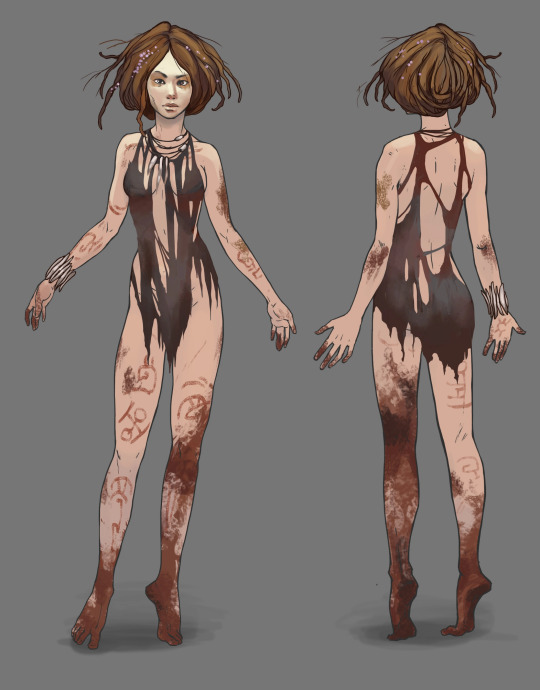
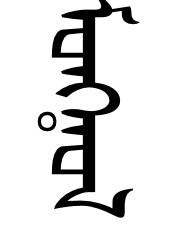
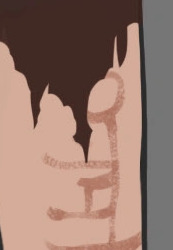
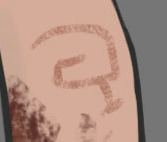

shaped and reshaped...
#not sure how much. what's the word. bond? involvement? not experience. closeness? anyone in the team has with any of these cultures#but i recall learning lead writer is indigenous in some way & heavily self-inserts as artemy [like. That's His Face used for#the p1 burakh portrait] so i imagine There Is some knowledge; if not first-hand at least in some other way#& i'm not in the team so i don't know how much Whatever is put into Anything#[ + i've ranted about the treatment of the brides Enough. enough i have]#so i don't have any ground to stand on wrt how i would feel about how these cultures are handled to make the Kin somewhat-hodgepodge.#there is recognizing it is Obviously inspired by real-life cultures [with the words;the alphabet;i look at Kayura i know what i see]#& recognizing it Also is. obviously and greatly imagined. not that weird for you know. a story.#like there is No Turkic/Altaic/Mongolic culture that has a caste of all-women spiritual dancers who place a great importance on nudity#as a reflection of the perfect world and do nothing but dance to bring about the harvest. ykwim...#like neither the Mongols nor the Buryats nor the Tibetans dress the way the Kin does. that's cos the Kin is invented. but they're invented.#.. on wide fundations. ykwim......#Tengrism has a Sky Deity (Tengri) with an earth-goddess *daughter* whereas the kin worship an Earth-Goddess mother of everything#+ a huge bull. Buddhism has its own complete cosmogony & beliefs which from the little I know Vastly Differ from anything the Kin believes#like. yeah. story. but also. [holds myself back from renting about the Brides again] shhh...#neigh (blabbers)#pathologic#pathologic 2
300 notes
·
View notes
Text
Who is “Ak Ana” in Turkic Mythology?

View On WordPress
#Ak Ana#Central Asian culture#Creation myths#Deities#Folklore#Goddesses#Legends#Oral tradition#Shamanism#Turkic mythology
1 note
·
View note
Text



Multi-muse roleplay blog featuring gods and goddesses from Turkic mythology. Portrayal influence comes from Turkic lore, headcanons and the Turkic pantheon's appearance in Marvel's 616. OC, AU, multi-muse && crossover friendly. 21+



27 notes
·
View notes
Note
Hiiii <3<3<3 (love ur blog) can I request water power aliases!!! Ty
Thank you for sending an ask ❤️
Superhero names - hydrokinesis




Rigo - "wet" in Latin
Unda - "wave" in Latin
Rhea - "flowing water"
Onda - "ripple" in French
Meeri - "sea of bitterness"
Zale - "strength of the sea"
Kai - "the sea" Hawaiian name
Ondine - "water spirit" in Latin
Yara - "beauty of the waves" Brazilian name
Talay - Turkic god of the Ocean
Neptune - Greek god of sea
Vales/Volos - Slavic god of sea
Amphitrite - Greek goddess of sea
Rán - Norse goddess of sea
Superpower pack
Visuals

Tried something new with the look cuz why not
#shiftblr#reality shifting#desired reality#shifting community#reality shift#shifting#shifting realities
16 notes
·
View notes
Text

Legends and myths about trees
Legendary tree deities (23)
Metsaema – the mother spirit of the forest in Estonian mythology.
The name Metsaema translates to "forest mother" in Estonian (from metsa "forest" and ema "mother"). For this reason, the word metsaema can also be used as a descriptor of other similar deities in Eastern European mythology, for example Vir'ava.
The mother of the forest acts as ruler and guardian. She is sometimes also connected with fertility, acting as a midwife in some texts. Forest spirits are said to be found in each forest, ruling over the animals, birds, trees, and berries. Wild animals such as bears, snakes and wolves are commonly connected with them across European mythologies.
The shared elements of Finnic, Slavic, Baltic and Turkic mythology can be seen in similarities between forest mother spirits. Metsaema has strong similarities with the forest mother spirits Vir'ava, from Mordven mythology, and Meža mate, from Latvian mythology. Other related deities are the Lithuanian goddess of the forest and animals, Medeina, and the Finnish goddess of the forest, Mielikki (Ref).
[Photo below: European pine marten ]
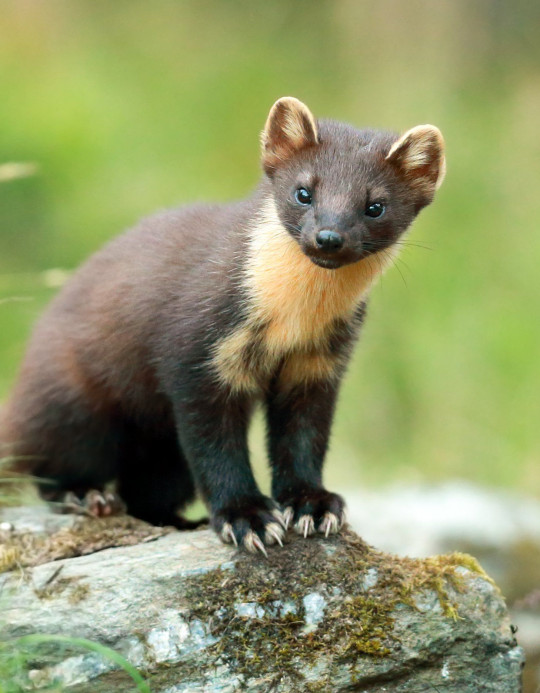
木にまつわる伝説・神話
伝説の樹木の神々 (23)
メッツァエマ 〜 エストニア神話に登場する森の母なる精霊
メッツァエマという名前は、エストニア語で「森の母」と訳される(メッツァは「森」とエマは「母」の意)。このため、メッツァエマという言葉は、例えばヴィラーヴァのような、東欧神話に登場する他の類似した神々を表す言葉としても使われる。
森の母は支配者であり守護者である。彼女は時に豊穣にも関係し、助産婦のような役割を果たすくだりもある。森の精霊はそれぞれの森に存在し、動物、鳥、木、木の実を支配していると言われている。熊、蛇、狼などの野生動物は、ヨーロッパの神話に共通する。
フィンランド神話、スラブ神話、バルト神話、テュルク神話に共通する要素は、森の母なる精霊の類似性に見ることができる。メッツァエマはモルドヴェン神話の森の母なる精霊ヴィラーヴァやラトヴィア神話のメジャ・マテと強い類似性がある。他にも、リトアニアの森と動物の女神メデイナや、フィンランドの森の女神ミエリッキ(参照)が関連している。
#trees#tree myth#tree legend#Metsaema#folklore#mythology#legend#estonian mythology#forest mother#forest#european pine marten#forest spirit#nature#art
147 notes
·
View notes
Text
Legendary Creatures: Dragons

By Allie_Caulfield from Germany - 2012-10-10 10-13 Berlin 313 Pergamon Museum, Ischtar Tor, DetailUploaded by FunkMonk, CC BY 2.0, https://commons.wikimedia.org/w/index.php?curid=22769614
Dragons are possibly the most popular and most widespread legendary creature in the world. Their exact shape varies from culture to culture, but all agree that they are serpent-like creatures. The oldest creation stories we have records of have a storm or sky god slaying a dragon representing chaos to create the world. Their mythology spans from Egypt through Europe and Asia, with related creatures being found in the Americas, Africa, and Oceania. Dragons have continued to fascinate people through history to the modern day.

By Unknown author - http://www.yiyuanyi.org/plus/view.php?aid=45093, Public Domain, https://commons.wikimedia.org/w/index.php?curid=10576539
There is a study that shows about 39% of people are afraid of snakes, with that fear especially prominent in children, even if they live in areas where snakes are rare. It's thought that this fear is the origin of dragons since the oldest stories have dragons that more closely resemble snakes. The fear of dark caves, deep pools, wild mountains, sea bottoms, and haunted forests-all logical things for early humans to fear-may have given dragons their lairs. Another theory is that the discovery of dinosaur bones, many with their very long spines and large bones, may have given rise to dragons or perhaps have explained their acquisition of legs and wings.

Source: https://www.reddit.com/r/coolguides/comments/f5wski/dragon_classification/
Dragons have many forms and many names. One way to differentiate them is by the number of limbs, between zero and six, whether they have wings or not, whether or not they can fly. Dragons can be associated with any of the classical elements (earth, air/wind, fire, water) or transient phenomenon, like lightning or thunder or even rainbows. Whether they are good or bad depends on the culture and the treatment they receive from people. While all are large for serpents, they range in size from those that will fit inside a house, to those that live in mountains and even the deep currents of the ocean.

By Jami Dwyer - https://www.flickr.com/photos/jamidwyer/2844706070/in/set-72157606952714490/, CC BY-SA 2.0, https://commons.wikimedia.org/w/index.php?curid=4973343
Some of the myths about dragons include:
Apep or Apophis, an underworld serpent, and the Ouroborus in Ancient Egyptian mythology
Aido Wedo, The Rainbow Serpent of the Fon people
Masingi, a healer who lives in clean houses, of the Tsonga people
Kirimu, a large animal with a black hide, teeth like a dog, a huge belly, an eagle's tail, and seven horned heads that has a blood pact with the lightning god
Tiamat, a primordial sea goddess from Babylonian mythology
Leviatin, a sea monster from Jewish mythology
Nāga, one of several serpentine dragons from Hinduism which spread through Southeast Asia as the Naga or Nogo
Láwû, from the Kapampangan mythology of the Philippines, which caused lunar eclipses by eating the moon
Rồng or Long, from Vietnam, which was a water deity
Lóng, from Chinese mythology, perhaps the most recognized Asian dragon with many variations in body type, but generally long bodied
Ryū, the Japanese version of the Chinese dragon, generally benevolent water spirits
Yilbegän, the Siberian Turkic, Tartar, and Slavic dragon, a many-headed man eating monster
Horned Serpent, One of the more common representations in Native American mythologies, especially in the Southeast woodlands
Quetzalcoatl, a feathered serpent of the Aztec who was god of light, day, wisdom, and the winds and Ruler of the West, spreading to the Maya as K'uk'ulkan and to the K'ichi' as Q'uq'umatz
Amaru, a chimeric dragon of Incan mythology with multiple heads, though likely predates the Inca
Mo'o, the shape-shifting lizard of the Hawaiian people
Taniwha, Māori dragons that live in deep waters and caves or in the sea, especially with dangerous currents or deceptive breakers
Bolla, a serpentine dragon of the Albanian people that sleeps through the year except for St. George's Day and becomes a Kulshedra in its twelfth year, a hydra-like creature
Y Ddraig Goch, one of two dragons, red and white, that King Vortigern witnessed fighting and Merlin foretold the red one, representing the Welsh people, would defeat the white, representing the Saxon people
Sárkány, human-shaped dragons, most giants with multiple heads, who lose strength as they lose heads
Cuélebre, Asturian and Leonese giant winged serpents that live in caves with treasure and kidnapped xanas, which are beautiful women who live in various water features, and was a maiden cursed into that form
7 notes
·
View notes
Text
Headcanon notes about Fódlani diaspora populations outside of Fódlan
Scothaic ("excellent/elite" in Irish, endonym): northerners from Nemesis Dynasty who fled to Dagda (with the help of Brigidans)
Qispichisqa ("rescued" in Quechua, exonym but eventually adopted by the group): Adrestians from the counter-invasion following First Mach War who didn't (couldn't) return to Fódlan
Akbunuzi ("white horn" in Turkic, exonym): refugees of Sreng-Faerghus conflict, with largest populations in northwestern Almyra
Fideli ("faithful" in Italian, endonym): Southern Church exiles, with largest populations in southernwestern Almyra
Bazargani/Tajari depending on the region ("sell/trade/merchants" in Persian and Arabic, technically exonym but plenty adopted it for themselves): descendants of Leicesterian merchants in Almyra who continue to speak the language
My worldbuilding is that the Dagdans from the First Mach War and Dagdans from the more recent war are actually entirely different groups btw. First one, which I'll call Middle Dagda, is based on Teotihuacan (+other city states across Mesoamerica under its influence), second, which I'll call Lower Dagda, is based on the Inca Empire (except it's on the east coast on the continent instead of west). Although people in the two regions are aware of each other due to trade through Brigid (think of them as Pacific Islands in the Atlantic), the civilizations emerged independently and don't consider themselves to be part of the same group.
More about the diaspora populations under the cut
Scothaics fled from Fódlan to Middle Dagda late in the War of Heroes, and they were originally reviled by Middle Dagdans due to their "barbaric" cultures + bringing over all kinds of diseases. But elites of Middle Dagda soon realized their unsavory reputations made them useful soldiers, which resulted in many Scothaics rising in status through battles, and after a few hundred years of intermarriage they came to be considered just one of the many ethnic groups in Middle Dagda by others there.
Still, many Scothaics clung on their cultural identity as people of Nemesis' Fódlan, and the idea that they should retake the continent from Adrestians (even if they'd rule from Dagda upon succeeding) remained popular among them; they were one of the (but not the only) major factions within Middle Dagda who pushed for the First Mach War. Other Middle Dagdans think Scothaics are LARPing whenever they do the "we were Elites n shit" because by all means they've completely integrated into Middle Dagda now, but they let them have it because it can be politically useful.
Qispichisqas were Adrestians in the post-First Mach War Dagda exploration parties who made their way past Middle Dagda (their recent enemies) to the mountains of Lower Dagda, then got trapped there. The Adrestian government made no effort to retrieve them, but they were saved by the ruler of a prominent city-state near a lake, who they swore undying allegiance to. As that city-state expanded to an empire spanning north and south of the Lower Dagdan coast, they also began to deify the ruler, which was adopted and spread enthusiastically by the Qispichisqa, as it was similar to what the Adrestian emperors liked to do. As a result, the Qispichisqa hold a syncretic faith that's a fusion of early~middle Church of Seiros practices and Lower Dagdan religion.
At the time of canon, they still consider themselves to be followers of Sothis, but they also believe that their ruler is the rightful ruler over followers of the goddess, not the Adrestian emperor; from their view, the current Adrestia (and Fódlan as a whole) has strayed too far from the faith. Qispichisqa don't have a "retake the land" thing going on like the Scothaics because they consider Lower Dagda to be their home and holy land now, but they certainly had no qualms about invading Fódlan once their ruler ordered, either.
Scothaics and Qispichisqas do not get along if they meet each other, and do not consider themselves to part of the same demographic, whether that's Fódlani or Dagdan, mostly for religious reasons. That being said, they don't come into contact with one another that often; again, Lower and Middle Dagda are pretty far away from one another, and the geography would make a war between them very cumbersome, so the two regions try to not step on each other's toes. Sometimes they have scuffles over Brigid, but when that happens both armies are usually more preoccupied with killing Brigidans.
As you might expect from that, Brigidans do not like Scothaics or Qispichisqas alongside other Middle/Lower Dagdans and Fódlanis, and many not-so jokingly say that their ancestors helping Scothaics escape to Dagda was their worst mistake.
Akbunuzis are northern Faerghans in Almyra who crossed the Whitehorn Sea to flee the Faerghus-Sreng conflict, starting at or before 892 with new waves coming in every so often. The community is very poor, with many turning to crime for survival; as a result they have a poor reputation among larger Almyran society. Despite Almyra already being a multi-ethnic and cultural society, the government didn't make much effort to try and integrate the Akbunuzi, partially because they tend to be religiously and culturally rigid, mostly because the government needs there to be criminals for the military to hunt in order to advance their careers and recent immigrants made for easy targets.
Some Akbunuzi attempt to return to Faerghus, but reality is harsh, they are scorned there, too, for being "too Srengi" (as northern and northwestern Almyra also has lots of Srengis or similar ethnic groups and is strongly influenced by their culture + there's some intermarriage) and/or "too Almyran."
Fidelis are Southern Church Adrestians who supported Victoria von Hrym in 1065 and were subsequently exiled. Some went to the Eastern Church in Leicester, but others crossed the Pearl Sea to southwestern Almyra. Fideli are also known for not integrating into Almyran society, and are even more insular than the Akbunuzi. Many have "taking Adrestia back from heretics on the promised day" as their goal, and as a result religious extremism and indoctrination is very rampant within the community; they also have very high birthrates, and other Almyrans often scorn them by calling them biohazards/pests.
Some spread malicious rumors about beliefs of Church of Seiros after bad encounters with the Fideli, and the government makes little effort to dispel those, or to deradicalize and integrate Fidelis; partially because, again, it's legitimately difficult, but also because fueling prejudice towards easy targets is useful for staying in power and justifying constant military operations at the border.
People who identify as Bazarganis/Tajaris, aka Leicesterian-Almyrans in specific instead of just Almyrans with general Fódlani ancestry, usually have ancestors who moved to Almyra after the Leicester Rebellion of 801 at the earliest and mostly during~after the Crescent Moon War in 881. That being said, a lot of Almyrans with Leicesterian ancestry don't identify as Bazargani/Tajari after a few generations; most of their families were fairly well-off merchants who came to Almyra for economic opportunities, so many quickly changed religions and intermarried/integrated into ethnic groups that would provide them better connections.
Because the language(s) of Almyra and Leicester already overlap, Bazargani/Tajari identification is based mostly on religion; usually those who call themselves such are involved in businesses that sell across the border, necessiating that they stay in touch with their homelands.
Akbunuzis, Fidelis, and Bazarganis/Tajaris absolutely do not get along with one another, as old grudges and prejudices carried over from Fódlan gets amplified by the differences in socioeconomic conditions in Almyra.
Akbunuzis think Fidelis give their faith a bad name and that Bazarganjs/Tajaris are selfish and irresponsible for being rich yet not helping other Fódlani-Almyrans; Fidelis hate Akbunuzis for being "enemies of the Saints" (because they're descendants of northerners) and Bazarganis/Tajaris for being unfaithful/apostates/etc; and Bazarganis/Tajaris don't want to be associated with the "backwards and uneducated" Akbunuzis and Fidelis under the umbrella label of Fódlani. Things often get ugly between the communities if news of something happening in Fódlan reaches them, with violence/riots being an expected occurence. The reaction of larger Almyran society to such incidents is usually something like, "oh look the barbarians are being barbaric again, but why do they have to do it in our country."
That being said, the three populations do have something in common, and it's that they tend to not serve in the Almyran military. For Akbunuzis, it's because making money from crime is easier than signing up for the military, and if they try to sign up later, they'll get screened and cut and arrested because of the criminal records/connections. For Fidelis, it's for religious reasons; they won't serve a master other than the goddess and they won't fight for a cause other than taking back Adrestia from the heretics. For Bazarganis/Tajaris, they usually pay instead of sending soldiers, which is legal and the government lets them, but socially, it's a bad look— that's exactly where the stereotype of Fódlanis being cowards come from, and many see it as sign that their allegiances lie with their Fódlani homelands rather than Almyra.
Things presumably get better post-canon once Claude takes the throne; it wouldn't be easy, but getting people with Adrestian and Faerghan heritage on his side was probably good for diplomacy with Fódlan, too.
#fe3h#fire emblem three houses#fe3h worldbuilding#almyra#dagda#brigid#fodlan#slotalks#fe3h headcanons
15 notes
·
View notes
Text
Can't stop thinking how magnificent Umay Ana is.
To understand this, you need to know one thing about Tengrism: that is Tengrism differs from region to region and there is no universal one. Which means, every practitioner will have something to them unique.
I have been gaining information on Umay Ana from different areas and worship Her as all what I have found.
Firstly, Her name. In Turkic, root "umāy" meant "placenta", "afterbirth". So here comes Her one of many roles, She is the Mother Goddess, Goddess of pregnancy, motherhood, birth, children, as well as protector of children and pregnant people. It was said, that when a baby laughs, it is Umay Ana with them.
As well, as being the Goddess of children, She is the Goddess and protector of women as well. With that, comes Her role as Goddess of fertility and virginity.
Beside that, She is The Earth, The Nature. She is a Creator Goddess, wife of supreme God Kök Tengri, it was to Her hunters prayed, so that they would have a good game.
Some equate Her with other Goddess, Od Ana, which I do, which gives Her domain of marriage and fire, especially the fire that burns in the human soul.
The last I have, is Her role as carrier of the souls, psychopomp, if you will. On Her hands soul enters the world, and on Her hands it leaves. That's why, it was said, there was blue stain on newborn baby's backs, it is Her mark, that soon fades.
She is the first cry of just born child as well as first whine of a baby animal. She is the last breath of an old man, as well as last rale of and old animal.
She is the first menstruation, She is the little girl, She is the maiden, She is the mother and her children, she is the grandmother and her grandchildren.
She is the laugh of baby boy, She is the hunter, that returned from hunt with his new food.
She is the harvest we eat, She is the fields, She is the steppes.
She is your cat at your side, as well as She is a mighty bear, that could kill.
She is the mountains, She is the caves, She is the forests, She is the planes.
She is the first flowers waking up after the snow, She is the naked trees in the winter. She is the seed, that was planted in the soil, She is the most mighty trees, that hold the earth.
She is the old bones, covered in moss, She is the flowers on fruit trees, She is the new beginning in spring, She is the abundance of life in summer, She is the going to rest world in autumn, She is the calmness in winter.
She is there, when trans women realise themselves and seek their new place, She is there, when trans men realise themselves and seek new place. She is there, when two people want to spend their life together.
She is the fire, that beats inside your heart, that keeps you warm.
She is soft and full of love, She is the Mother, the creator of this world, and She wants us to love it. She can be both accepting, as well as destructive, as nature can feed you or kell you, as fire can warm you, as burn you.
She protects with bow and arrows, Her hair is long and golden, She wears three-pronged crown.
She is so many. She is everything and everywhere and everyone.
I can't stop thinking how magnificent Umay Ana is. And I am excited to learn about Her more.
29 notes
·
View notes
Text
Kabru's name
(I’ll provide some links in a reply, so Tumblr doesn’t eat this)
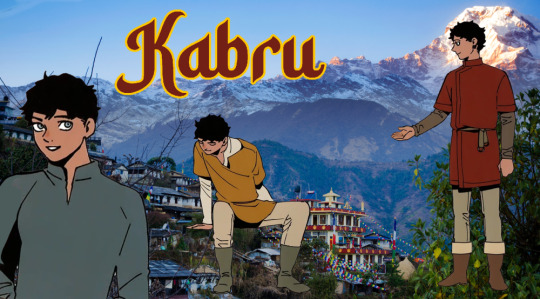
(UPDATE: Full version of this research is available here!)
Fun Dungeon Meshi facts! Kabru’s name is also the name of one of the peaks of the Himalayan mountain chain. It’s on the border between India and Nepal, which fits with Kabru’s skin and hair color (and texture). Also a lot of clothes and color choices Kui makes in the Daydream hour supplements really give me a Nepalese vibe, especially that red tunic. Lighter colored eyes are also not unheard of in that region, though obviously blue is still rare.
Utaya is also the name of a real place! It’s a small village (population of 98 people) at the foot of a mountain in the sub-arctic region in north-eastern Russia, and the name ‘Utaya’ is from the Yakut language, which has Turkic origins. Utaya also means ‘mandible’ in Swahili, and possibly is a name that means ‘Always bright’ in Hindi? Can’t confirm those last two.
Anyway all that to say that I HC Utaya having a culture influenced by Nepal and India, and I HC Kabru’s mom being named Annapurna, which is another mountain in the Himalayan range, named after the goddess of food - what could be more fitting for Dungeon Meshi, right?
I also HC Kabru having a big dick cuz he’s named after a mountain and quite popular with the ladies but that’s really not that important i just think it’s funny
Some pics of Nepalese and Indian men that reminded me of Kabru under the cut, along with some more general pictures of the people of Nepal. Enjoy and do what you will with the fruits of my research!

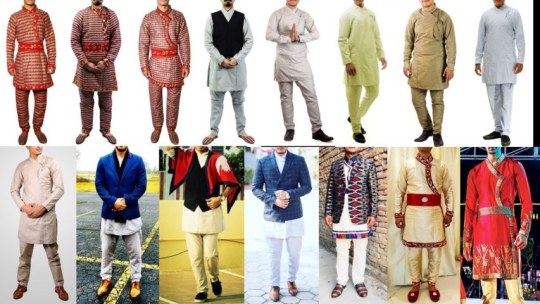

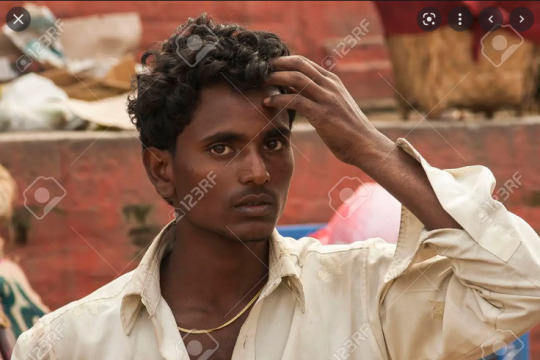
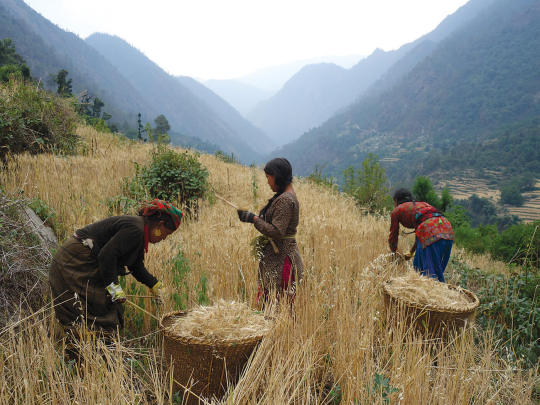

#dungeon meshi#delicious in dungeon#kabru#dunmeshi#ダンジョン飯#headcanons#my stuff#Dungeon Meshi Research
219 notes
·
View notes
Text
Umay

is the goddess of fertility in Turkic mythology and Tengrism, and hence associated with women, mothers, and children. Umay not only protects and teaches infants, but it may also separate the souls of the deceased, particularly small children. She resides in heaven and is unseen to the average person. The souls of unborn newborns are housed in her "temple" on Mount Ymay-tas or Amay. The Khakas highlight her in particular. The essence of fire (Od Ana) originated in Umai.
In the 8th century inscription of Kul Tigin, the name appears in the phrase Umay teg ögüm katun kutıŋa "under the auspices of my mother who is like the goddess Umay".
Umay is the guardian of women and children. The oldest evidence is found in Orkhon writing monuments. From this, it is clear that Umay was recognised as a mother and mentor. Additionally, khagans were considered to symbolise Kök Tengri. Khagan spouses, known as katuns or hatuns, were also considered Umays. Katuns had offspring with the aid of 'Umay, and these infants served as the empire's guarantee. According to Divanü Lügat'it-Türk, when women worship Umay, they bear male children. Turkic women use strings linked to miniature cradles to will a baby from Umay. This idea is shared by the Tungusic peoples of southern Siberia and the Altai people. Umay is always pictured with a child. There are very few exceptions to this.It is thought that when Umay leaves a kid for an extended period of time, the child becomes unwell, and shamans are summoned to bring Umay back. A sleeping baby's smile indicates Umay's presence, while wailing indicates Umay's departure.
According to Potapov, Umai, as the guardian of newborns, transports deceased children to paradise. According to the Kyrgyz people, Umay protects not just children but also Turkic communities worldwide. At the same time, Umay helps people gain more food and products while also bringing them luck.
Umay is known as Sarı Kız, or 'Yellow Maiden', because to her association with the sun. Her colour and emblem are yellow. She is pictured with sixty golden tresses that resemble sun beams. She is considered to have formerly been identical to Od iyesi. In the Republic of Turkey, female given names include Umay and Ece.

11 notes
·
View notes
Text
going through pdfs and an autism moment the levels of which you've never seen and i'm reminded of the multiple buryat creation myths in which the lake (baikal) plays such an important role (because. they live here) and in which the buryats are descendants of swans... and thinking about how patho (inspired by this culture among others) completely lacks both A Lake and anything related to swans, with birds appearing as the muu shubuun "wicked birds" (another mongolic + turkic (mu shuvuu) folklore figure that is different in patho than it is irl)(i would say. yeah obviously), plague-bearers, etc. you got the Gorkhon which is river and not lake, which could be an equivalence, but rivers & lakes typically have different places in animist beliefs, often have different gender identifications as well, and the Kin does not have the same relationship to the river as the people of the region have with Baikal...
also the concept of sky-dwellers/sky-divers/generally Brother There's Something Up There with the head of the pantheon/all-progenitor being sky-bound ("the heavens" comes up often) is almost completely absent from the Kin's religious background, and most of the -dwelling is one in/within the Earth, with Bos Turokh literally being the land and Boddho being explicitely an earth-mother-goddess, and rather it being Suok associated with air.
that's fascinating how this like very prominent part of mongolic culture, whether attributed to Tengri or to Lama for the buddhist parts of it or Esege/Esege Malan is absent from the Kin's culture that's inspired by those and almost flipped on its head completely.
#also the fact that tons of animals that are as sacred to the Buryat as the bull (a totem) also do not appear.#(no bitches? face) NO [sacred fish in the baikal lake)? patho got only dry dead fishes. this is so sad.#neigh (blabbers)#like the more you know about this bunch of little things the more you notice all the ways in which it differs it feels like a puzzle#salty about the no horses though. come on... don't you want to put horses in your mongolic-cultures-inspired game.....#in general mongolic (incl. buryat) mythology/religion has like a bunchhhhh of gods and spirits all associated with different elements#whereas the Kin. straight up does not. that's a major difference especially considering how central the Kin's beliefs are in patho lol
14 notes
·
View notes
Text

praecipuus > turkicgods this blog only contains Turkic gods and goddesses now. 😊
9 notes
·
View notes
Text
Mythic Creatures by Region & Culture
Part 8: Asia and South Pacific
The Mesopotamian entries are often culture-specific and I'll need to sort them into their respective regions in future.
allegedly Asian
Barometz; Salamander
Smaller Entries:
Akathaso, Burma, tree spirit; Barmanou, Pakistan; Benzaiten; Churel; Creatures of Azerbaijan; Dab Hmong; Dakhanavar Armenian; Ḍākinī; Death; Landlord Deities; Mountain God; Peacock Princess; Sin-you; Sky Fox; Teng; Tenghuang; Xeglun Tungusic Ainu
Akkorokamui; Amemasu; Hoyau; Kenas-unarpe; Korpokkur; Mintuci Cambodia; Koan Kroach nightmare fuel; Kting voar also Vietnam; Mrenh kongveal
China
Ao; Ao Guang; Azure Lung; Bai Lung Ma; Bai Suzhen; Bai Ze; Bao Si; Bashe; Bi Fang bird; Bixi; Black Tortoise; Boto_and_Dolphin_Spirits; Cangjie; Chang; Chi; Chinas; Chinese guardian lions; Chinese Monkey Creatures; Chinese serpent killed by Li Ji; Chinese Souls; Chiwen; Chiyou; City God; Daji; Dēnglung; Dilung; Diting; Dogs in Chinese mythology; Dong Yong and the Seventh Fairy; Dǒumǔ; Dragon turtle; Fangfeng; Fangxiangshi; Feilian; Feilung; Feng; Fènghuáng; Fengli; Flying Horse of Gansu; Four Perils; Fox Spirit; Fuxi; Fuzanglung; Fuzhu; Gangcheori; Ghosts in Chinese culture; Gonggong; Guang yi ji; Hairen; He-He Er Xian; Hong; Hòutǔ; Hun and po; Hundun; Huodou; Húxiān; Jiangshi; Jiaolung; Jin Chan; Jinmenju also Japanese; Jiutian Xuannü; Jiutou Zhiji Jing; Jiuweihu; Jué yuán (Japanese version Jueyuan); King Father of the East; Kitchen God; Kuafu; Kui; Lake Tianchi Monster; Luan; Luduan; Lung; Lungma; Lungmu; Magpie Bridge; Magu; Menshen; Mo; Mogwai; Momu; Moon Rabbit; Nian; Nine-headed bird; Nüba; Nüwa; Pangu; Panhu; Panlung; Peng; Penghou; Pig Dragon; Pipa Jing; Pixiu; Pulao; Qianlima also Korean; Qilin; Qingji; Qingniao; Qiulung; Queen Mother of the West; Sanshi; Sha Wujing; Shangyang; Shen; Shen_clam_monster; Shenlung; Shi Dog; Shuimu; Spirit Turtle; Stone Sentinel Maze; Swan Maiden Yao; Taotie; The Governor of Nanke; The Painted Skin; The Nine Peahens and the Golden Apples; Three-legged crow also Japanese and Korean; Tianguo; Tianlung; Tianma; Tu'er Shen; Tubo; Tudigong; Unicorn; Watersheep (see Vegetable Lamb of Tartary); Vermillion Bird; Wangliang; White Tiger; World Turtle; Wutong Shen; Wuzhiqi; Xian; Xiangliu; Xiao; Xiezhi; Xingtian; Xirang; Yao Grass; Yāoguài; Yellow Lung; Yeren; Yeti also Tibetan and Nepali; Yinglung; Zhenniao; Zhu Bajie; Zhulung
Hittite
Annunaki; Illuyanka the equivalent of Hurrian Ḫedammu; Hittite Goddesses of Fate
Hurrian
Annunaki; Ḫedammu the equivalent of Hittite Illuyanka; Tilla; Ullikummi; Upelluri
Iran (Persia)
Akvan Div; Al but also in Mongolia, Russia, Afghanistan, Caucasus; Almas also Turkic and Mongolia; Anguiped also Greek and Roman.; Arzhang Div; Azhdaha; Chamrosh; Div; Div-e Sepid; Fulad-zereh; Gochihr; Griffon; Huma bird; Karkadann allegedly lived in India and Persia; Manticore allegedly lived in India; Peri also Turkic, Islamic (and Indian?); Rakhsh; Shabrang; Shahbaz; Shahmaran Indo-Iranian and Turkic; Shahrokh; Sheshe; Simurgh; Sphinx in a wide sense; Takam; Tyger allegedly lived in Persia; Unicorn; Vegetable Lamb of Tartary the Chinese watersheep allegedly lived in Persia; Werehyena; Winged Unicorn; Zahh��k
Java
Antaboga, pre-Islamic, Hindu; Kakawin; Keong Emas; Wewe Gombel Korea; Bulgae; Chilseok; Dokkaebi; Dokkaebi bangmangi; Egg Ghost; Gasin (house god); Gunungsin; Gwisin; Haesindang Park; Inmyeonjo; Jihaguk daejeok toechi seolhwa; Korean dragon; Korean Virgin Ghost; Munshin; Namu doryeong; Pulgasari; Qianlima also Chinese; Ryong; Samsin Halmeoni; Seonangshin; Sosamsin; The Heavenly Maiden and the Woodcutter; Three-legged crow also Japanese and Chinese; Ungnyeo; Ureongi gaksi;
Mongolia
Al but also in Persia, Russia, Afghanistan, Caucasus; Almas also Iran and Turkic; Aq Bars, winged snow leopard, heraldry from 800s onwards, also Slavic; Mongolian Death Worm Myanmar; Manussiha; Nat; Nawarupa; Pyinsarupa; Sphinx in a wide sense; Thayé; Yokkaso
Nepal
Gurumāpā; Khyāh; Kichkandi; Lākhey; Murkatta; Yeti also Chinese and Tibetan
Philippines
Alan of the Tinguian people; Amalanhig of the Visayan; type of Aswang; Amomongo of the Visayan; Angalo of the Ilocano; Anggitay Philippine centauride, female Tikbalang; Anito; Aswang; Bakunawa; Bal-Bal; Batibat of the Ilocano; Berbalang of Mindanao towns; Berberoka northern Luzon; Bernardo Carpio; Bungisngis Meluz, Orion, Bataan and Batangas; Busaw; Buso Bagobo; Dalaketnon Cebuano; Ekek; Engkanto; Ibong Adarna; Kapre; Kataw; Kumakatok; Manananggal; Manaul; Mandurugo; Minokawa; Nuno sa punso; Philippine Mytic Creatures; Pugot; Sarangay; Sarimanok; Sigbin; Sirena; Siyokoy; Tigmamanukan; Tikbalang; Tiyanak; Wakwak
allegedly Scythian (rider culture, no written records, all inhabitants and creatures based on Greek reports)
Amazons, Amazons (List); Arimaspi north Scythia; Scythian genealogical myth; Scythian religion; Scythians; Tarand; Vegetable Lamb of Tartary
Taiwan
Hanitu; Mo-sin-a; Ta'ai; Tek-ko-kui
Thai
Apsonsi; Cha kla; Hatsadiling; Hemaraj; Kong Koi; Krahang; Krasue; Kuman Thong; Mae Nak Phra Khanong; Mae yanang; Nang Mai; Nang Ta-khian; Nang Tani; Nariphon; Ninlaret; Phi phong; Phi Tai Hong; Phisuea Samut; Pop (ghost); Sphinx in a wide sense; Sudsakorn; Suvannamaccha
Tibet
Gyalpo spirits; Ro-langs; Simhamukha; Snow Lion; Tibetan myth; Wind Horse; Yeti also Chinese and Nepali
Vietnam
Hồ ly tinh; Kting voar also Cambodia; Lạc bird; Nghê; Rồng ; Vietnamese Dragons
Turkic
Äbädä, also found in Siberian mythology; Abasy, also found in Siberian mythology; Aiy Yakut; Al in Mongolia, Russia, Afghanistan, Caucasus; Al Ana; Al Basty from Sumerian; Alara, also found in Siberian mythology; Almas also Iran and Mongolia; Archura; Asena; Ayaz Ata; Bai Baianai also Yakut; Basty Turkic alp or mare; Bichura Turkic household spirit; Chai nenesi; Chesma iyesi; Çor also Siberian; Ergene iyesi; Erkenek; Hortdan; Irshi; Itbarak; İye; Konrul; Korbolko; Kormos; Mhachkay includes Tatar lore; Mu shuvuu; Örek; Peri also Persian, Islamic (and Indian?); Qarakorshaq; Sazakan; Shahmaran Indo-Iranian and Turkic; Sheka; Shurali; Su iyesi; Susulu; Tepegöz; Tulpar; Turul also Hungarian; Upiór also Slavic; Uylak; Werewolf; Yekyua; Yelbeghen; Yer iyesi; Yer-sub; Yuxa
Turkish
Gelin; İn Cin; Uzuh
Siberia
Äbädä, also found in Turkic mythology; Abasy, also found in Turkic mythology; Aiy Yakut; Alara, also found in Turkic mythology; Bai Baianai, also found in Turkic mythology; Çor also Turkic; İye also Turkic\; Menk; Oksoko Yakut; Ongon; Pitsen; Sihirtia; The Great Snake; Yekyua; Yelbeghen
South Pacific Islands
Abaia: Fiji, Solomon and Vanuatu Islands. ; Abere, unspecified "Melanesia"; Adaro, Solomon Islands, merfolk; Aitu, from Maori to various east and west Polynesian cultures; Amai-te-rangi Cook Islands; Apukohai, Hawaii; Aremata-Popoa and Aremata-Rorua; Atonga Samoa; Atua; Auriaria Kiribati; Avatea Cook Islands; Baloma; Barong; Flaming Teeth Fiji; Gazeka Papua New Guinea; Hatuibwari Solomon Islands; Ila (Samoan myth); Kae and Longopoa; Kai-n-Tiku-Aba; Kalamainu'u Hawaii; Kawas; Kihawahine; Kupua Hawaii; Losi Samoa; Menehune Hawaii; Miru Cook Islands; Moʻo Hawaii; Moso's Footprint Samoa; Nawao Hawaii; Nei Tituaabine; Nganaoa; Nightmarchers Hawaii; Pahuanui Tahiti and Society Islands; Pua Tu Tahi; Rogo-Tumu-Here; Savali; Sina and the Eel; Talamaur Vanuatu; Tamangori; Tangaroa; Taotao Mo'na Mariana Islands; Tapairu Cook Islands; Tiʻitiʻi; Tikokura; Tinirau similar to Māori Tinirau and Kae;
Māori
Aitu also common in all parts of East and West Polynesia, sometimes with slightly different meanings; Atua; Hāhau-whenua; Hākuturi; Hawakai; Hemā; Hine-nui-te-pō; Kiwa; Kumi Lizard; Kurangaituku; Maero; Manaia; Maori ghosts; Matuku-tangotango; Moehau; Nuku-mai-tore; Pania of the Reef; Paoro; Patupaiarehe; Ponaturi; Pouākai; Taniwha; Taoroinai; Te Wheke-a-Muturangi; Tinirau and Kae; Tipua; Waitoreke; Whakatau; Whiro
Indian Ocean Islands
Folklore of the Maldives; Rannamaari
Japan (separate categories for Ainu and Okinawa)
Abumi-guchi; Abura-akago; Abura-sumashi; Aka Manto; Akabeko; Akaname; Akashita; Aketeko; Akubōzu; Akugyo; Akuma; Akurojin-no-hi; Ama no Fuchigoma; Amabie; Amanojaku; Amanozako; Amazake-babaa; Amefurikozō; Ameonna; Amikiri; Amorōnagu; Aoandon; Aobōzu; Aonyōbō; Aosaginohi; Arikura-no-baba; Ashi-magari; Ashinaga-tenaga; Ayakashi; Azukiarai; Azukibabaa; Azukihakari;
Bake-danuki; Bake-kujira; Bakemono; Bakeneko; Bakezōri; Baku; Banchō; Basan; Betobeto-san; Binbōgami; Biwa-bokuboku; Boroboroton; Bukit Timah Monkey Man WWII Japanese soldiers in Bukit Timah (Singapore) saw this; Byōbunozoki;
Chimimōryō; Chōchin'obake; Chōchinbi;
Daidarabotchi; Daikokuten; Danzaburou-danuki; Datsue-ba; Dodomeki; Dōsojin;
Ehon Hyaku Monogatari; Emishi; Enenra;
Fūjin; Funayūrei; Furaribi; Furutsubaki-no-rei; Futakuchi-onna;
Gagoze; Gashadokuro; Gazu Hyakki Yagyō; Gohō dōji; Goryō;
Hagoromo (swan maiden play); Hakuzōsu; Hanako-san; Hannya; Hare of Inaba; Harionagu; Hashihime; Heikegani; Hell Courtesan; Hibagon; Hiderigami; Himiko; Hito-gitsune; Hitodama; Hitotsume-kozō; Hitotsume-nyūdō; Hone-onna; Hotoke; Hyakki Tsurezure Bukuro; Hyakki Yagyō_Wild Hunt; Hyōsube; Hyottoko;
Ibaraki-dōji; Ikiryō; Ikuchi; Inari Ōkami; Inugami; Inugami Gyōbu; Ishinagenjo; Isonade; Issie; Issun-boushi; Itsumade; Ittan-momen;
Janjanbi; Japanese Serpent; Jikininki; Jinmenju also Chinese; Jinmenken; Jorōgumo; Jubokko; Jueyuan (Chinese version Jué yuán);
Kaibyō; Kamaitachi; Kami; Kamikiri; Kappa; Karura; Kasa-obake; Kasha; Kawauso; Kechibi; Keneō (oni); Kidōmaru; Kijo (folklore); Kinoko; Kitsune; Kitsune no yomeiri; Kitsunebi; Kiyohime; Kodama; Kōga Saburō; Komono; Konaki-jiji; Konjaku Gazu Zoku Hyakki; Konjaku Hyakki Shūi; Konpira Gongen; Koromodako; Koto-furunushi; Kotobuki; Kōya Hijiri; Kubikajiri; Kuchisake-onna; Kudagitsune; Kudan; Kumiho; Kuraokami (ryu); Kuro-shima (Ehime); Kurozuka; Kuzenbo; Kuzunoha; Kuzuryū;
Makuragaeshi; Maneki-neko; Matarajin; Mazoku; Megijima; Menreiki; Miage-nyūdō; Mikaribaba; Mikoshi-nyūdō; Misaki; Mishaguji; Mishihase; Mizuchi; Mokumokuren; Momiji; Momotarō; Mononoke; Mōryō; Mujina; Myōbu;
Namahage; Namazu; Nekomata; Ningen; Ningyo; Niō; Noderabō; Noppera-bō; Nue; Nuppeppō; Nurarihyon; Nure-onna; Nuribotoke; Nurikabe; Nyūdō-bōzu;
Oboroguruma; Ochimusha; Ōkubi; Okuri-inu; Ōmukade; Oni; Oni Gozen; Onibi; Onihitokuchi; Onikuma; Onmyōji; Onryō; Ōnyūdō; Ootakemaru; Orochi; Osakabehime; Osaki; Otoroshi; Oukami; Ouni;
Raijin; Raijū; Rashōmon no oni; Reikon; Rōjinbi; Rokkaku-dō; Rokurokubi; Ryū; Ryūgū-jō; Ryūjin;
Sakabashira; Samebito; Sankai; Sarutahiko Ōkami; Satori; Sazae-oni; See-Hear-Speak No Evil; Sessho-seki; Setsubun; Shachihoko; Shapeshifter; Shibaemon-tanuki; Shichinin misaki; Shidaidaka; Shikigami; Shikome; Shinigami; Shiranui; Shirime; Shiryō; Shōjō; Shōkera; Shuihu; Shuten-dōji; Smallpox demon; Sōjōbō; Sorei; Sunekosuri; Suzuka Gozen;
Takaonna; Takarabune; Tamamo-no-Mae; Teke Teke; Tengu; Tenka; Tennin; Tenome; Tentōki and Ryūtōki; Tesso; Three-legged crow also Chinese and Korean; Tōfu-kozō; Toyotama-hime; Tsuchigumo; Tsuchinoko; Tsukumogami; Tsukuyomi-no-Mikoto; Tsurara-onna; Tsuru no Ongaeshi; Tsurube-otoshi; Tsurubebi;
Ubagabi; Ubume; Umi zatō; Umibōzu; Ungaikyō; Ushi no toki mairi; Ushi-oni; Uwan;
Waira; Wani; Wanyūdō; Watatsumi;
Yako; Yakusanoikazuchi; Yama-uba; Yamabiko; Yamabito; Yamainu; Yamajijii; Yamata no Orochi; Yamawaro; Yanari; Yashima no Hage-tanuki; Yato-no-kami; Yobuko; Yōkai; Yōsei; Yosuzume; Yotsuya Kaidan; Youkai; Yuki-Onna; Yume no seirei; Yūrei;
Zashiki-warashi; Zennyo Ryūō; Zuijin; Zashiki-warashi
Okinawa
Kijimuna
allegedly Arabic Cinnamologus
Morocco Aisha Qandicha
Mesopotamia Abyzou; Annunaki; Anzû; Ardat-lilî; Beings of Irkalla or Kur; Bull of Heaven; Dagon; Edimmu; Ghosts in Mesopotamian culture; Hanbi; Humbaba; Igigi; Kilili; Kulullû; Kusarikku; Labbu; Lahamu; Lamashtu; Lilin also in Jewish folklore; Lotan; Lugal-irra; Lulal; Mukīl rēš lemutti; Mušḫuššu; Mušmaḫḫū; Namtar; Ninimma; Ninurta; Pazuzu; Rabisu; Scorpion men; Sea goat; Serpopard; Seven-headed serpent; Six-headed Wild Ram; The Four Winds; Tiamat; Udug; Ugallu; Umū dabrūtu; Uridimmu; Urmahlullu; Wild Man, Wild Woman ; Wild Men, Wild Women Enkidu; Zaqar
allegedly Mesopotamian Sirin
Akkadian Abkallu, also Sumerian; Akhkhazu, later Babylonian; Alû also Sumerian, an utukku with no mouth, ears, lips; Asag also Sumerian; Bašmu (possibly other parts of Mesopotamia, but badly attested); Lilu; Ušumgallu
Assyrian Adrammelech killed an Assyrian king; Alal references Babylonians
allegedly Assyrian Aralez in Armenian folklore, Semiramis controls an Aralez
Babylonian Akhkhazu, earlier Akkadian; Alal from Chaldean-Assyrian sources; Kulilu
Sumerian Abkallu, also Akkadian; Al Basty, later also in Turkic traditions; Alû also Akkadian, an utukku with no mouth, ears, lips; Asag also
Akkadian Kuli-ana; Palm Tree King#
Mesopotamian (Other) Atargatis Canaanite goddess; Tannin Canaanite; Yam Canaanite
Buddhism
Acala, Vajrayana Buddhism & East Asian Buddhism; Apalala a naga king; Apsara; Asura; Āṭavaka; Cakrasaṃvara Tantra; Ḍākinī; Diting; Girimekhala; Hayagriva; Heruka; Hevajra; Hungry Ghost; Kalaviṅka; Kangiten Buddhism in Japan; Kṣitigarbha; Kuṇḍali; Mahakala; Mahamayuri; Mahoraga; Manjushrikirti; Mara; Mucalinda; Nariphon; Niō; Preta; Rakta Yamari; The sixteen dreams of King Pasenadi; Trailokyavijaya; Tulpa; Vajrakilaya; Vajrayakṣa; Vemacitrin; Wisdom King; Wrathful deities
Jainism Ambika; Dharanendra; Gomukha; Jwalamalini; Mahoraga; Nabhi; Rishabhanatha
India
Aghasura asura in shape of 8 mile serpent (500 CE to 1000 CE, but most likely between 800 and 1000 CE); Agni_deity; Airavata; Akshayavata tree (estimated between the 4th and 15th century CE. Some parts of the text may be from the 750 to 1000 CE period.); Anasuya; Andhaka asura with 1000 heads 2000 eyes 1000 arms; Angiris; Apsara; Arjuna; Asi; Asura; Bakasura a rakshasa (despite "asura" in the name); Barbarika; Basnak Dau; Bhagadatta; Bhargava; Bhoota; Bhramari; Bhringi; Brahmahatya; Brahmarākṣasaḥ; Buru; Chakora; Chana and Munda; Chaturbhuja; Chedipe; Chidambara Rahasiyam; Chinas; Chir Batti ghost light; Chitrāngada; Chyavana; Creatures from Vetala Tales; Daayan; Daitya; Daksha\; Daksha yajna; Danava; Daruka; Dawon; Devas; Devatas; Durgamasura; Durukti; Dvarapala; Dvipa; Gādhi; Gaja; Gajasimha; Gaṇa; Gandaberunda; Gandharva; Garuda; Ghosayatra Parva; Grahana; Guhyaka; Gusainji Maharaj; Halahala; Hamsa; Haryashvas and Shabalashvas; Hidimba; Hiranyakashipu; Hiranyaksha; Ichchadhari naag; Ila; Ilavida; Ilvala and Vatapi (asura); Iravati; Jahnu; Jarita; Jvarasura; Kabhanda; Kālakeya ; Kālakeyas; Kalanemi (asura); Kalanemi (Ramayana); Kaliya; Kamadhenu; Kamakhya; Ketu; Keukegen; Kimpurushas; Kinnara; Kirmira; Kirtimukha; Koka and Vikoka; Kotavi; Kubera; Kumbhakarna; Kumbhāṇḍa; Kuntilanak ; Kurma; Kuttichathan; Lajjā Gaurī; Mada; Madhu-Kaitabha; Madhusudana; Mahabali; Maharajikas; Mahishasura; Mahoraga; Makara; Manasa_Snake_Goddess; Mānasaputra; Mande Barung; Maṇibhadra; Manohara; Mara_Goddess2 identical name to another death goddess Mara_Goddess (unrelated???); Maricha; Matsya; Mayasura; Monkey-man of New Delhi; Mṛtyu; Mukasura; Naga; Naga fireballs; Naga people; Nagaraja; Naimiṣāraṇya; Nandi; Narakasura; Narantaka-Devantaka; Narasimha Half human / Half Lion --> how Vishnu fulfills a prophecy like Eowyn or MacBeth; Navagunjara; Nivatakavacha; Pahlavas; Panchajanya; Panchamukha; Pichal Peri; Pippalada; Pishachas; Pitr; Poubi Lai; Prahlada; Pratyangira; Puloman; Putana; Rāgarāja; Rākshasas; Raktabīja; Ravana; Rishyasringa; Rukmavati; Samagana; Sampati; Sarama; Sarpa Kavu; Shahmaran Indo-Iranian and Turkic; Shambara; Shankha; Shatarupa; Shesha; Shikhandi; Shukra; Sphinx in a wide sense; Srbinda; Subahu; Sunda and Upasunda; Suparṇākhyāna; Ten Giant Warriors; Tree of Jiva and Atman; Tripurasura; Trishira; Tumburu; Ucchusma; Uchchaihshravas; Ulupi; Upamanyu; Vadavagni; Vahana (Mount of a Deva); Vajranga; Vanara; Varaha; Varahi; Vasuki_Naga_King; Vel; Vetala; Vidyādhara ; Vidyādharas; Viprachitti; Viradha; Vishala; Vritra; Vritra (dragon); Vyaghrapada; World Elephant; World Turtle; Yaksha; Yakshini; Yali; Yama; Yamaduta; Yamantaka
allegedly Indian Abarimon; Acheri; Aeternae; Astomi Pliny the Elder; Bragmanni; Calingae Pliny the Elder; Crocotta; Gold-digging ant; Griffon; Indus worm; Karkadann; Kratu; Mandi; Manticore; Monopod; Nuli; Odontotyrannus; Panther; Pard; Rompo; Salabhanjika; Sciritae; Sharabha; Tandava; Unicorn; Wild Man, Wild Woman ; Wild Men, Wild Women
Ayyavazhi Sect Kroni
Assam Baak
Bengali Bengali myths; Byangoma
Kannada Nale Ba
Kashmir Bramrachokh will-o-wisp; Rantas
Kerala Aana Marutha
Malayalam South India; Kallana
Manipur / Meitei Haosi Namoinu; Helloi; Hingchabi; Kanglā Shā; Kao; Keibu Keioiba; Khoirentak tiger; Khongjomnubi Nonggarol; Lai Khutshangbi; Meitei dragons; Meitei Mythic Creatures; Nongshāba; Pākhangbā; Sagol kāngjei; Samaton; Uchek Langmeitong; Umang Lai Sanamahism; Yenakha Paotapi Sri Lanka; Devil Bird; Maha Sona; Nittaewo; Reeri Yakseya; Sphinx in a wide sense; Tharaka; Yakseya and Yakka
Tamil Mamuni Mayan; Nadi astrology; Tamil myth
Indonesia Babi ngepet; Bukit Timah Monkey Man Singapore; Hainuwele; Hantu; Hantu Air; Hantu Bongkok; Hantu Raya; Hantu Tinggi; Jenglot; Kuntilanak also India; Lang Suir aka Langsuyar; Malay Creatures; Manseren Manggoendi; Nyi Roro Kidul; O Tokata; Orang bunian; Orang Mawas; Orang Minyak; Orang Pendek; Pelesit; Penanggalan similar to Philippines Manananggal; Pocong; Polong; Putri Tangguk; Rangalau Kiulu Phantom; Seri Gumum Dragon; Seri Pahang; Singa; Suanggi; Suangi; Sundel bolong; Tuyul; Warak ngendog
allegedly Malay Á Bao A Qu; Abath
Bali Bhoma; Gajamina; Leyak; Ogoh-ogoh
Flores Ebu gogo
Notify me about any mistakes or if any of these mythic figures, beings and creatures should not be used in art or fiction.
#mythic creatures#mythic creature list#legendary creatures#legendary creature#legendary being#legendary beings#creature list#legendary creature list#monster list#list of monsters
3 notes
·
View notes
Text
Hatari / ハタリ, Volug / オルグ, and Nailah / ニケ
Hatari (JP: ハタリ; rōmaji: hatari), also called Hatary in some releases, is a laguz kingdom that lies beyond the Desert of Death in Fire Emblem: Radiant Dawn. The name is likely a corruption of Tatary, also called Tartary, a term invented by the Europeans to refer to the then-unknown, arid lands north of the Ural Mountains stretching between the Caspian Sea and the Pacific Ocean. This area consisted of modern-day Mongolia and parts of Northern India and China, associated heavily with the Tatars - a term for all Turkic cultures in the lands - and the Mongol Empire that would form from them united under Ghengis Khan. As a result of the Mongolian conquest, the peoples were typically viewed unfavorably; the name Tatary was changed to Tartary to invoke Tartarus, a region of the Greek underworld that imprisoned the Titans. This may be why Hatari is on the other side of the Desert of Death, to the east of the known world. Additionally, there used to be conspiracy theories of a mysterious, highly advanced Tartarian Empire that once was found in the Tartary region before being destroyed in a flood. This debunked theory may have inspired Hatari's lack of contact with Tellius prior.
Volug is a wolf laguz that joins Nailah and Rafiel in crossing the Desert of Death. Unfortunately, this localized name doesn't seem to have a basis in anything. In Japanese, his name is オルグ (rōmaji: orugu), romanized as Orugh. He most likely is named after Örüg Temür Khan (JP: オルク・テムル・ハーン; rōmaji: oruku temuru hān) of the Mongols' Northern Yuan dynasty. After 14 years of khagan rule by the Oirats, Örüg - then called Gulichi or Ugetchi Khashikha - organized the death of the khan and seized power, returning power to those descended from Ögedei Khan. According to Japanese sources, under Örüg Temür Khan's rule, the names Mongol and Yuan were done away with, in favor of Tatar; this was not well received by the Mongols, as it indicated subservience to the Ming dynasty that they so badly wished to conquer. When the brother of the prior Khan claimed asserted himself to rule, most all clans supported him, and
Nailah is the queen of Hatari who crossed the Desert of Death to unite with the other laguz. Unfortunately, her name does not seem to have an association with the region of Tatary; Na'ila bint al-Furafisa, wife of Uthman ibn Affan - a companion to the prophet Muhammad and the third Caliph. Uthman had a fruitful, peace-filled rule for over a decade. However, some disgruntled people raised rebellion, eventually storming the Caliph's home and killing him. Na'ila attempted to protect her husband from the assailants, but in the end, only lost a few fingers.
In Japanese, Nailah's name is ニケ (rōmaji: nike) officially romanized as Nike. She likely is named after the Greek goddess of victory, Nike. She serves as a loyal aide to Zeus. This position was received by her and her siblings as a result of being the first gods that sided with Zeus against the Titans in Titanomachy. It's possible a parallel was made between Nailah being the laguz leader who aids Pelleas in retaking his kingdom and Nike supporting Zeus. Additionally, Nike is typically depicted with wings, then called "Winged Victory", which could be alluded to in Nailah's bond with the heron Rafiel.
6 notes
·
View notes
Note
I like this one: 🍓🐛! It’s ok, I yap too :3 the reason why I stay anonymous is because I’m too embarrassed to be friends with people in DMs & stuff because I’m weird… I hope you don’t mind! Your name is so beautiful :0 Is it middle eastern? they always have such meaningful names!
Eeeeeee, thank you for complimenting my MBTI but personally, I find INTJ to be the best type but of course, everyone has different tastes.
Yes, I do like Snow White & her content :D and Toaster-San too! I talk about her often because I tend to get weirdly attached to some topics ( autism :( )
🍓🐛 anon
Hello dear 🍓🐛 anon, I’m glad you liked it!
TRIGGER WARNING! 👀 This answer may be longer than I intended.
I know what you mean, I'm also usually shy to talk to people via dm and stuff too, I have no problem with us talking this way, it feels like we're sending each other letters, doesn't it?
I'm Turkish, Umay is the name of a goddess of fertility in Turkic mythology and Tengrism and as such related to women, mothers, and children. Umay resembles earth-mother goddesses found in various other world religions. Asya is plainly the continent of Asia, although my mom named me Asya because she heard it in an old Turkish movie and liked the way it sounded.
My motherland, Turkey is a country that is located majority in Asia and a small part in Europe. Unfortunately, because of some people who are in control of my country, it has almost turned into a Middle Eastern country. I have said before that I plan to study abroad, and this was one of the main reasons. And because there is high inflation, too many immigrants, a problematic education system, injustice, and a lack of safety of one's life (especially women and children). And because of all those people who voted for that particular candidate despite our country being in such a terrible situation... I feel like there's a social corruption in progress here. It makes me very depressed that my beautiful motherland has become like this. Mustafa Kemal Ataturk, the founding father of the Republic of Turkey's legacy is not being honored the way it should be. I simply want to live peacefully with a sense of freedom. I may have vented a bit, I apologize.
When it comes to personality types, it's hard to pick a favorite for me. I personally love all the analysts and of course my comrades, the diplomats. I usually get along with them in my daily life. I'm usually more drawn to INTJs romantically. ENFJs too, for sure. But I always found INTJs to be the most charming and enigmatic type. I feel more on a mutual wavelength with INTJs. A sort of common ground and understanding. I used to have an INTJ crush, but I never confessed to him. I felt like I was going to embarrass myself. Which I probably would've made a fool of myself. 😔 I wonder what INTJs think about the INFPs.
As for Toaster-san, I've seen her but I didn't know she was also writing fanfic, I read her latest one and I just LOVED it. I don't know if she's written any others, I'd like to read them if she has, I haven't seen any in her masterlist. I can already tell I'm going to be one of her close followers. She really caught my interest. (⸝⸝ᵕᴗᵕ⸝⸝)
0 notes
Text
One of my stories is D&D inspired. I wanna have a pantheon of gods. But while I have a list of names for them from a name generator, I could also use names of gods from a variety of mythologies.
Here's the list:
Goddess of Light: Gimera (original name) or Phoebe (as in, the Titan from Greek mythology)
God of Darkness: Eszotz (original name) or Erlik (as in, the one from Turkic mythology)
God of Nature: Elo (original name) or Aphrodite (Greek god)
God of Chaos: Thosborh (original name; he's also male) or Eris (goddess from Greek mythology)
God of the Sun: Citia (original name; with this name, this god would be neither male nor female) or Vishnu (from Hinduism)
Goddess of Death: Vadione (original name) or Isis (from Egyptian mythology)
God of the Forge: Enah (original name; this one is non-binary too) or Hephaestus (from Greek mythology; would be male)
God of the Sea: Dhomus (original name) or Poseidon (from Greek mythology)
God of the Sky: Edia (original name; she would be a goddess) or Zeus (from Greek mythology; he'd be male)
Goddess of Love: Drymis (original name) or Venus (from Roman mythology; yes, I know Hera is her Greek counterpart)
God of Lightning and Thunder: Yotl (original name; they would be non-binary) or Thor (from Norse mythology, not the Marvel version; would be male)
God of War: Eenar (original name) or Odin (name from Norse mythology)
Most of what would change between these two options would be the gods' names and maybe their pronouns.
That said...
0 notes